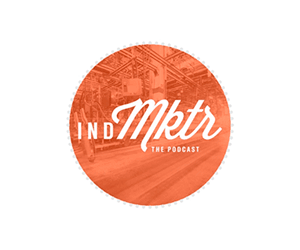We’ve all seen the stats and heard the grandiose claims. Indeed, marketing automation is much more than a trend or buzzword; it’s a bonafide technology solution and business strategy that will continue to redefine the future of marketing.
SiriusDecisions estimates that nearly 50 percent of B2B companies will have purchased and implemented marketing automation by the end of 2015, up from 20 percent in 2012. Gartner Research says by 2020, 85 percent of customer relationships will be managed without any human intervention.
The myriad providers out there boast that their tools can help close more leads and simplify the complex, multi-touch buyer ecosystem. This is especially critical for industrials, where longer sales cycles are common, prospects undergo substantial research and consideration, high-pressure sales tactics are often ineffective, and multiple decision makers must be in sync for a sale to occur.
But is marketing automation for all businesses and brands? Is it the “silver bullet” solution to most ailing marketing challenges? And should executives jump in feet first without careful consideration? No, no, and definitely NO.
At Industrial Strength Marketing, we’re big proponents of what marketing automation can do for manufacturers. But we also know that many B2B brands — especially industrials — are still getting up to speed with digital marketing. Just because these tools allow marketers to “do more with less” is no guarantee that the effects will actually be felt by customers.
So before embarking on a journey into fairly uncharted — and often tumultuous — territory, consider these five common marketing automation pitfalls.
Mistake #1: No clear justification for using marketing automation
The most common mistake we see is B2B companies purchasing marketing automation software without a sound plan of action. We’re not talking about an outbound strategy for actually using the tools and targeting prospects (see Mistake #2 below); we’re talking about evaluating your organizational objectives from an operational standpoint to determine if this is the right path for your business. Given all the success stories floating around, the classic “everybody else is doing it” excuse is extremely dangerous in this case.
So before taking another step, see if you can sufficiently answer why you need marketing automation to begin with. Decreased conversions? Inability to scale? A need for lead scoring? High-cost human errors? What is your “why,” and does it justify the risks and costs involved?
After confirming that marketing automation the path you want to pursue, the next step is creating a business plan with a clear-cut strategy and goals for your marketing automation program, well-defined metrics for success, and a realistic assessment of what it can and can’t do.
To put it simply: Marketing automation is much more complicated than just purchasing a technology solution. It requires a carefully orchestrated mix of software, process, content, and people. Not to mention adequate budget. Without those components in place, things can get messy quickly.
Mistake #2: Automating bad marketing processes
We don’t know which is a more dangerous pitfall: trying to program processes that don’t exist, or automating bad existing marketing habits. Either way, the advice holds true: Your marketing mix must be operating strategically and smoothly in manual form before you turn it over to a “machine” to do much of the work. In simpler terms: You can’t automate a good process that doesn’t exist.
A recent study by SiriusDecisions demonstrated the importance of strong lead management process in driving results with marketing automation software. The data indicates that companies using marketing automation combined with good process produced four times the sales volume of companies using automation with weak processes.
No process matters more in marketing automation than mapping the “buyer journey.” What is the path your leads take during the purchasing process? Do you know your key audiences (i.e., personas), when they need content and communications from you, and how/why they move toward fulfilling your calls-to-action?
It’s important to note that even with excellent documentation, leads won’t always flow neatly through the sales funnel. Quite a bit of strategic, metrics-based insight still must be infused into any process in order for your communications to feel relevant to customers.
Mistake #3: Assuming marketing automation will drive leads
The whiz-bang magic of marketing automation tools can leave your head spinning. Sure, most people are pleasantly surprised by all the features and benefits that come with these software suites. But remember: Marketing automation does not add contacts to your database and will not inherently resolve a company’s lead generation problems.
This is an important misconception that deserves clarification: Marketing automation platforms automate a lot of marketing functions and provide actionable data to better understand prospects and their needs, but they do not include all the digital marketing tools necessary for growth. In sales cycle terms, marketing automation tools are designed to nurture and activate leads in the middle of the funnel. You still need a solution for generating new leads to nurture in the first place.
Pamela Vaughan, HubSpot’s lead blog strategist, said it best: “If you’re relying only on marketing automation and have no strategy in place to grow your list with net new contacts, you’ll run out of people to market to. It’s as easy as that.”
Mistake #4: Implementing marketing automation in a marketing silo
With a name like “marketing automation,” it would be easy to assume these platforms fall squarely within the marketing world. In reality, they are tools designed to integrate with and benefit the sales team as much as anyone. And proper integration with your CRM is critical from a technology standpoint. For this reason (and more), the entire B2B organization should be involved in all marketing automation decisions, from initial selection to strategic planning to tactical implementation. To put it bluntly: Sales should be thought of as the customer of marketing automation initiatives, with the product being qualified leads.
The real value in marketing automation isn’t just making marketing more efficient; it’s also giving the sales team an advantage by improving the rate at which potential customers move through the buyer journey. But even though sales can happen faster with automation, it’s wise to keep in mind that leads still don’t want to be sold to unless they are ready. The true strategic value in automation — for both the marketing and sales teams — is forging more meaningful relationships with prospects. This is especially true in our digital world, where customers are now most of the way down the funnel before they connect with a salesperson, making it all the more critical that the sales team be involved early on to define key messages and develop the conversation.
This cause for collaboration makes adopting a mature marketing automation program an opportunity to repair a more fundamental disconnect between many marketing and sales departments. (According to a recent Chief Sales Officer CSO Insights sales optimization study, nearly two thirds of sales professionals rated their lead gen capabilities as “needs improvement.”)
Without a shift toward a collaborative mindset, marketing departments who adopt marketing automation in a silo will essentially be purchasing a more expensive email tool (and possibly increasing the frustration of their sales counterparts).
Mistake #5: Failing to produce fresh, timely content
The maxim may be overused, but the sentiment is undeniable: Content is king. Especially when it comes to marketing automation. If marketing automation is the engine, then content is the fuel. So the final mistake we see repeated fairly frequently is industrials buying a nice, shiny new sports car . . . but then quickly running out of gas.
Interestingly enough, many organizations have plenty of content. B2B marketers struggle more with the quality of their content and when it should be used in the sales cycle. In terms of generating new leads for the top of the funnel, engaging, interactive content is key. For mid- to late-funnel purposes, content should be more technical or focused on relationship building so that it enhances a prospect’s experience and reduces any friction that might slow down leads.
The best content isn’t strictly about your own products or services. Of course, prospects (and existing clients alike) need to hear about company news and product developments. But valuable, relevant information can come in many forms. Buyers make purchases for numerous reasons, and rarely is the decision based solely on product features.
Articles and advice abound for creating compelling content to feed the marketing automation engine, but you still need the resources to create and manage said content. According to a 2013 Marketo study, 66 percent of marketers with a documented content marketing strategy consider themselves effective (versus 11 percent of those without a documented strategy). And 86 percent of the most effective content marketers have someone who oversees their content marketing strategy (versus 46 percent of the least effective companies).
What’s Next?
There’s a lot to consider with marketing automation, as well as some pitfalls that can be rather intimidating. But the promise of these tools remains positive, in the right hands.
Unsure whether or not these platforms are right for your organization? Industrial Strength Marketing is here to help. We’ve become experts on the subject and were founded 10 years ago to help industrials develop and manage the resources they need to run intricate online marketing programs. If you’re looking for a marketing partner or just friendly advice, we’d love to chat. Give us a call or drop us a line.




